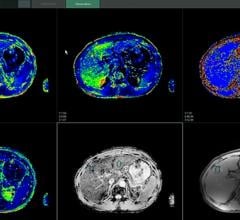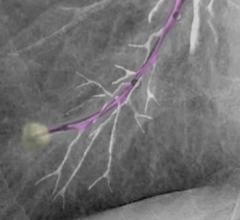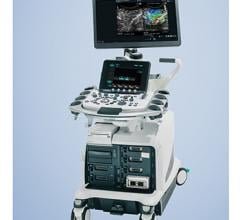
April 10, 2013 — Olympus received 510(k) clearance from the U.S. Food and Drug Administration (FDA) for its Articulating HD 3-D Laparoscopic Surgical Video System. It delivers value to surgeons and patients by reducing surgical errors and improving the speed, accuracy and precision of surgical tasks such as dissection, grasping and suturing when compared with traditional 2-D surgical systems, based on internal Olympus testing conducted using a simulated surgical model. This is accomplished by restoring natural 3D vision and depth perception when performing laparoscopic procedures and is independent of a surgeon’s skill level.
“The Olympus HD 3-D system is ideal for suturing, accurately identifying tissue planes and other precision surgical tasks that are required in my laparoscopic surgical cases,” said Marcos Michellotti, assistant professor of Surgery at Loma Linda University Health System in Loma Linda, Calif. “In addition, the articulating design enables me to obtain the critical view of anatomical structures in HD 3-D without losing the important visual horizon. This is not possible with traditional fixed angle laparoscopes.”
Another significant advantage of the new Olympus HD 3D video platform is its availability as a module that can be easily added to an existing Olympus Evis Exera III Universal Imaging System. The modular design reduces the investment necessary to add 3-D capability, and allows the surgeon to choose either 2-D or 3-D visualization from the surgical field. This helps to reduce capital investments and simplify asset management and training.
“The Olympus HD 3D System brings value to those surgeons that need the precision, resolution and depth perception of 3-D without the substantial capital investment and annual maintenance expenses associated with alternatives such as robotic technology,” said Luke Calcraft, president of the Medical Systems Group at Olympus Corporation of the Americas. “We are leading the way with innovations to help our customers realize the clinical efficacy and cost effectiveness required under Accountable Care.”
Olympus is a pioneer of minimally invasive surgery (laparoscopy), a modern technique in which an operation in the abdomen is performed through small incisions as compared to larger incisions needed in traditional surgical procedures. This surgical approach addresses the key requirements of Healthcare Reform:
- Increased Quality of Care — Minimally invasive surgery provides better clinical outcomes than traditional “open” surgery.
- Decreased Costs — Numerous industry and clinical studies have demonstrated that minimally invasive surgery provides significant cost savings when compared to a robotic surgical approach.
- Enhanced Patient Satisfaction — Minimally invasive surgery provides less scarring, shorter hospital stays and faster recovery than traditional “open” surgery.
The Olympus Articulating HD 3D Laparoscopic Surgical Video System will be showcased at the Society of American Gastrointestinal and Endoscopic Surgeons (SAGES) 2013 Annual Meeting to be held April 17 to 20 in Baltimore, Md. Surgeons are invited to visit booth #111 and experience the benefits of the HD 3-D technology.
For more information: www.olympusamerica.com


 December 23, 2019
December 23, 2019 









